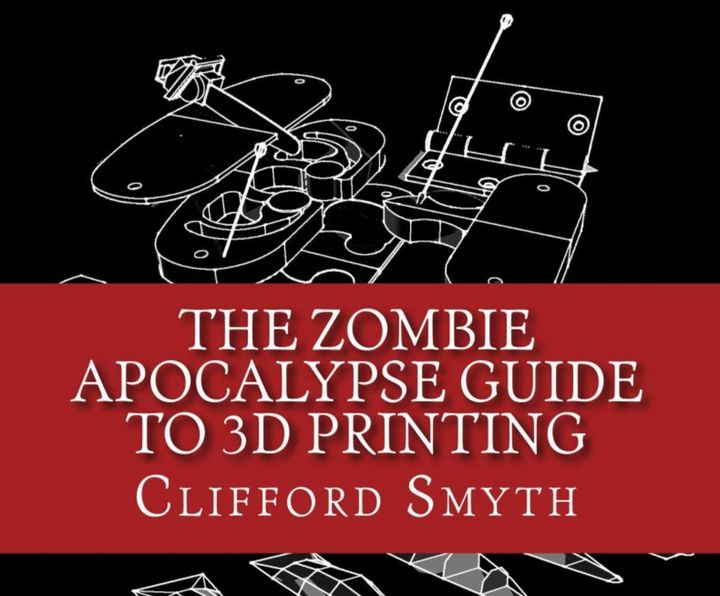
This week’s selection is “The Zombie Apocalypse Guide to 3D printing” by Clifford T Smyth.
There are many reasons to make use of a 3D printer, and I suppose a zombie apocalypse would be one of them, although I must admit I have not actually considered this particular scenario. At least not recently, anyway.
Does author Smyth really believe in a zombie apocalypse? It turns out, no. He says in the book’s introduction:
“The zombie apocalypse paradigm is used as a literary device to set the stage for an emphasis on independence, utility, and practicality.”
Aha, that makes a lot of sense. If you think about it, if you really were frantically 3D printing parts during the apocalypse you would certainly have to consider a number of best practices. You don’t want your bow to crack due to poorly chosen infill percentages just as a hungry zombie is approaching, do you?
The book proceeds immediately along these lines, as its first section is “Designing and Printing stuff that won’t break when you need it to work”. That is always a concern, but with the spectre of a zombie apocalypse looming, it’s something that needs more of your attention.
More practically, the book also provides solid advice on how to go about “prototyping and printing replacement parts”. That’s certainly a mandatory capability during the apocalypse, but is also a very handy skill at any time. I do this all the time now, and you should too.
Another chapter explores how to “make things fit”. This is a critical design and print skill when making things composed of several parts. It’s relatively simple to 3D print a single object, but when there are more involved, things get tricky. Do they actually fit together? What print sizing tweaks are required to ensure success? How do you make a working hinge? How can snap fit items be designed? These and similar questions are answered.
Finally, the book closes with a discussion of how to get the most from your 3D printer, as well as a number of case studies to illustrate the points made in the book. This involves tuning, calibration, and even troubleshooting problems, which, of course, you must do yourself during the apocalypse.
Hold on, I almost always have to do my own troubleshooting today!
Are we in the apocalypse already?
Via Amazon
